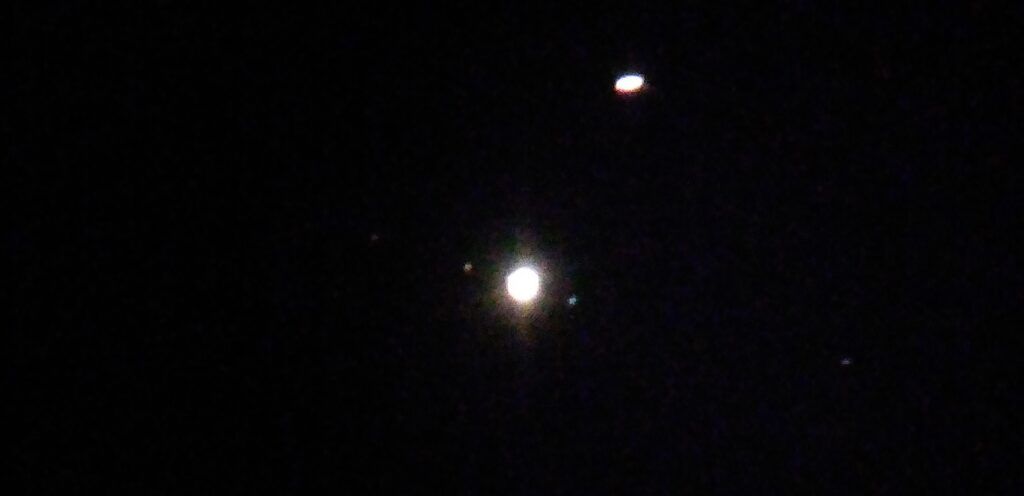
Happy Winter Solstice! And I hope you looked at the evening sky tonight to see the great conjunction of Jupiter and Saturn. The two planets were close enough together in their orbits (as seen from earth) to appear as one point, or if you could look through a telescope or even binoculars, you would be able to see both together! I pulled out my 6 inch Dobson telescope to get this view, and managed to take a picture through the eyepiece with my phone. (My dad is the real photographer in the family, and he decided to try it out; turns out it works!) There is a bit of over exposure of the light from the planets, so you can’t see the spaces between the rings and Saturn (the oval on the bottom) or the stripes on Jupiter’s surface, but you can see the four Galilean moons if you look closely (those would be Io, Europa, Gannymede, and Callisto). The two close to Jupiter are really visible, but look closely to either side on the same plane, and you can just see the other two (the one on the right side is very faint, it is about half the distance from Jupiter as the one on the far left). These were easier to see just looking through the eyepiece of the telescope, but the camera had a little trouble picking them up. Not bad though!
The conjunction happens every 20 years, but it hasn’t been this close during the night in 800 years, so the last time was before telescopes, in 1226! While I have looked at these planets separately, I had never been able to look at both like this together, so it was a really nice thing to see, since it will be another 400 years before they get this close again (don’t think I’ll be around for that one). If you are interested in some background, there is a short article on Vox.com about the great conjunction, and of course, NASA has a good write up about it, too.
If you have any interest in reading up about the planets, or other parts of the solar system, NASA has a great interactive on it, where you can get an overview, zoom in and out on the different parts of the solar system in real time layout, and click on links that take you to pages on the planets, moons, asteroids, and even where the major satellites are located. I highly recommend taking a look, even if you aren’t very interested in astronomy. It might make you take a look the night sky differently!
For anyone wondering why the image is backwards if compared to others, it is taken through a telescope mirror, so the image gets reversed, and I didn’t change it. Here it is right side up!


Wow Joanna! Love your photo and links. And website. Nice to catch up. over time and space. Have you thought of sending your photo to https://earthsky.org/earthsky-community-photos ? I use EarthSky for my homepage.